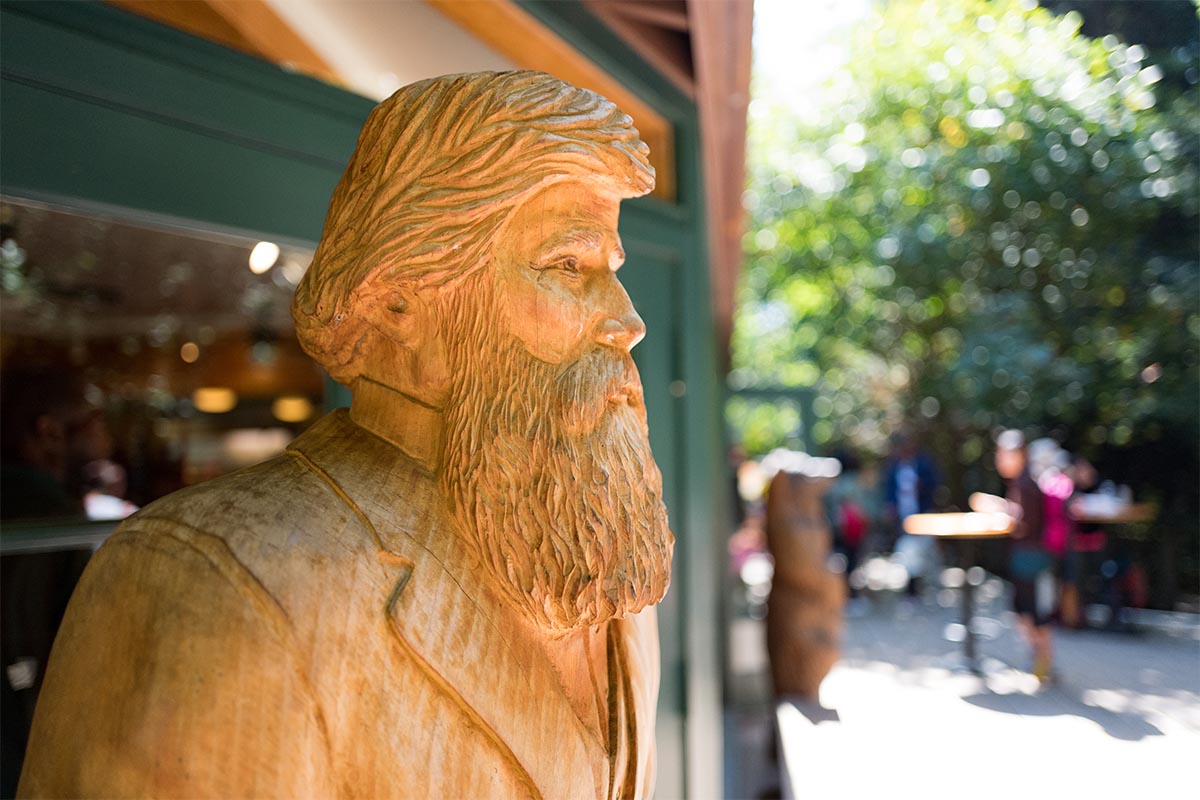The Sierra Club, the largest grassroots environmental organization in the United States, is now grappling with its troubling history of exclusivity and racism. The self-audit has come in the wake of months of national reckoning with discriminatory symbology and practices, and it’s starting at the very top with the club’s founding member: Scottish-American preservationist John Muir. In an open letter, Executive Director Michael Brune explained that the Sierra Club is preparing to”take down some of its monuments.”
Muir is commonly hailed as the “Father of the National Parks” for his extraordinary efforts to catalogue and conserve large swarths of the western American wilderness. The naturalist worked tirelessly to protect the areas that became Yosemite National Park and Sequoia National Park, decried the clutches of American materialism, and has the unique distinction of being commonly quoted in both dissertations on climate activism and the most basic of Instagram posts (“The mountains are calling and I must go.”)
As Brune acknowledges, though, there’s far more to Muir’s legacy. The same man who cared so dearly about the rivers and trees he spotted on hikes into the California wilderness, had surprisingly little compassion for the people who lived there first. In his writing, Muir called Indigenous people “dirty,” “deadly,” “hideous,” “lazy,” “savage” and “wife stealing.” A paper published in the American Indian Quarterly in 1978 details how Muir’s attitudes on Native Americans gradually shifted. Muir once wrote: “Perhaps if I knew them better, I should like them better. The worst thing about them is their uncleanliness.” Over time Muir did come to spend more time with different Indigenous respects, and offer words of respect. But his tone remained arms-length, and measured.
He certainly didn’t collaborate with them in his preservationist efforts, let alone invite them to the table. The Sierra Club remained an exclusive society long after Muir died in 1914; membership was contingent on sponsorship from existing members until the 1960s. This exclusion applied to Black Americans, too, who Muir also had some choice words for in his time. Muir once wrote: “One energetic white man, working with a will, would easily pick as much cotton as half a dozen Sambos and Sallies.” (Sambo is an outdated, derogatory term for people of African origin.) In another instance, sitting with two Black people at a campfire, Muir wrote: “I could see their ivory gleaming from the great lips, and their smooth cheeks flashing off light as if made of glass. Seen anywhere but in the South, the glossy pair would have been taken for twin devils, but here it was only a Negro and his wife at their supper.”
For those wondering: this was several decades after the Civil War. Muir is not just “a product of his time,” because many men and women of that time were fighting for racial justice, in the same tireless way that he was fighting for the Yosemite Valley. And one last gut-punch: a deeply uncomfortable link between the Sierra Club, and the racist theory of eugenics. Muir associated with the head of the American Eugenics Society, Henry Fairfield Osborn, while eugenicists Joseph LeConte and David Starr Jordan, who helped run the Sierra Club in the early 1900s, created a eugenic framework that was adopted for Nazi Germany’s eugenics legislation.
It’s bad. It’s sad. Acknowledging it doesn’t erase the fact that Yosemite National Park exists. Acknowledging it doesn’t “erase” history. It contextualizes it, it complicates it, it makes an effort at coming to grips with it. All credit to the Sierra Club for taking initiative on the discussion, and for championing racial equality within its ranks — it will divert $5 million towards diversifying its leadership — and out under the great big trees.
Subscribe here for our free daily newsletter.
Thanks for reading InsideHook. Sign up for our daily newsletter and be in the know.



















